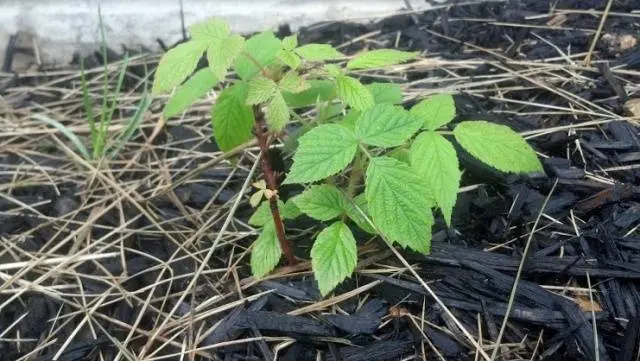Contents
Despite the variety of modern varieties and hybrids, simple “Soviet” raspberries still grow in most summer cottages. One of these old, but still popular, varieties is raspberry Vera. Vera’s berries are not large, they do not have any particularly expressive taste – this is the most common raspberry with small fruits that have a sweet and sour taste and a pronounced aroma. But the variety is considered one of the most stable: in any summer, raspberries give a good harvest. The taste qualities of Vera are not highly appreciated by tasters (about 3,5 points), and it is recommended to use the harvest of this raspberry for technical purposes: for making jams, jams, compotes and marmalade.

Information describing the raspberry variety Vera, with photos and reviews of those who planted it on their site, is collected in this article. It will also tell you how to grow raspberries to get the maximum yield, and how to propagate them.
Characteristics of the domestic variety
Scientists from the Siberian Research Institute worked on the selection of a new variety. Raspberry Vera was registered almost thirty years ago and recommended for cultivation in the Central and Southern regions of the country. The “parents” of the new hybrid were the most popular varieties at that time: Kaliningradskaya, Barnaulskaya and Novosti Kuzmina. Vera’s developers focused on productivity and frost resistance.

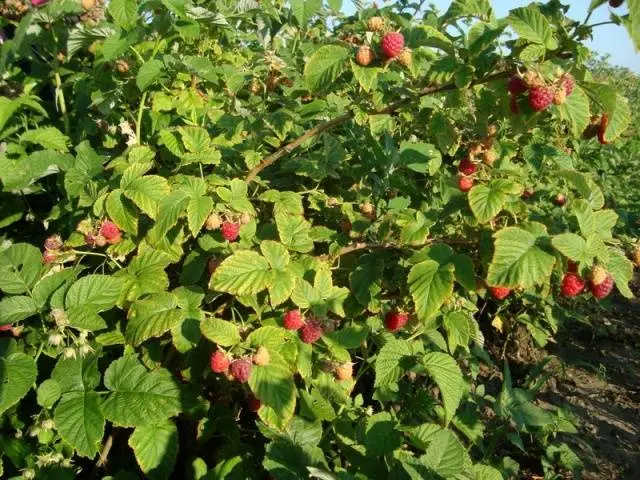
Vera description:
- raspberries with short growing seasons, belong to early ripening varieties;
- the bushes of Vera begin to bloom in mid-June, and already in the first decade of July, you can harvest the first wave of the crop;
- bushes are considered medium-sized, semi-spreading – the height ranges from 150 to 180 cm;
- the full formation of the bush occurs by the end of the third year after planting;
- annual shoots are painted green, flexible, their tops are slightly curved;
- two-year-old shoots become brown, elastic, but at the same time they bend well;
- all the shoots of Vera are erect, covered with small soft thorns;
- shoot formation is average (it is easy to propagate Vera, but there will be no abundant growth near the bushes);
- all shoots on raspberries are quite flexible, unbreakable, they are easy to bend to the ground if shelter is needed;
- there are a lot of leaves on raspberry bushes, they are medium in size, wrinkled, dark green in color;
- berries of medium and small size;
- the shape of raspberries is obtuse;
- the average fruit weight is 1,8-2,7 grams;
- raspberries are painted in a purple uniform shade;
- the drupes are loosely linked together, which is why the transportability and keeping quality of the Vera variety are unsatisfactory;
- the taste of the fruits is sweet and sour, not too pronounced, without any notes and halftones – an ordinary garden raspberry;
- the ripening of berries is simultaneous;
- the yield of Vera raspberries is high – up to three kilograms of berries can be harvested from a bush over the summer, on an industrial scale – about 13 centners per hectare;
- the frost resistance of the variety is average – when the temperature drops below -25 degrees and snowless winters, raspberry shelter is required;
- Faith does not tolerate drought well – raspberry yields in rainy years will be higher than in dry ones;
- the variety is susceptible to infection by purple spotting, but it is immune to shoot gall midge;
- raspberry is unpretentious, it does not require special care.
Pros and cons of a hybrid
An old raspberry variety with a thirty-year history must have undeniable advantages so that over the years it will not be supplanted by the latest hybrids. It cannot be said that raspberry Vera has a lot of positive qualities – this species also has significant drawbacks. But the reviews of summer residents and gardeners of the country about this raspberry are mostly positive – it does not leave domestic suburban areas and farm fields.
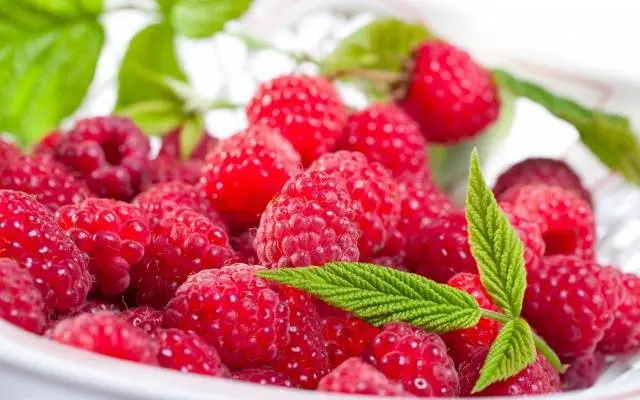
So, raspberry variety Vera has the following advantages:
- high yield;
- weak dependence of productivity on climatic features and external factors;
- average frost resistance;
- quite pleasant taste;
- suitability for technical use and processing;
- unpretentiousness and resistance to certain diseases;
- simultaneous ripening of berries and their inclination to shedding.
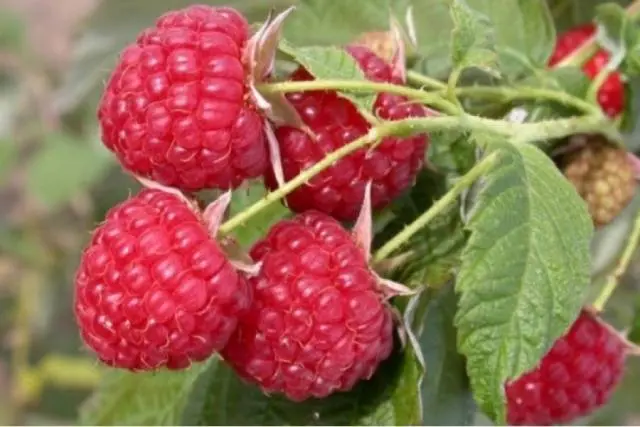
The old raspberries also have disadvantages. The most important disadvantages of raspberry Vera are:
- poor drought tolerance (regular watering is required in arid regions);
- insufficient frost resistance (farmers have to spend money and time on sheltering raspberries);
- lack of immunity to the main disease of raspberries – purple spotting;
- poor keeping quality of berries and unsuitability of the crop for transportation;
- not very “elite” taste of Vera’s berries.
Agricultural practices
As already mentioned in the article, growing the Vera variety is quite simple – you do not need to be a professional gardener for this. The most important thing on which the productivity of raspberries depends is high-quality planting material. Therefore, first of all, the summer resident needs to purchase good seedlings.

Here are some tips for inexperienced farmers:
- raspberry seedlings, as well as other horticultural crops, are recommended to be purchased in nurseries;
- high-quality planting material is not wrapped in polyethylene – the roots quickly rot in such conditions;
- the height of the shoots should be small – the younger the raspberry seedling, the better it will take root after planting;
- the root system must be well developed, without traces of insects and infections;
- each bush should have two to four shoots.
Good raspberry seedlings are shown in the photo below.
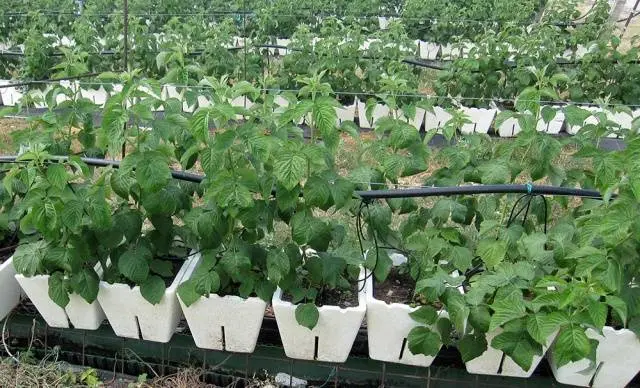
Landing conditions
Even before acquiring Vera’s seedlings, it is necessary to find a suitable place for raspberries on the site and calculate how many bushes will fit there. Raspberry variety Vera loves well-lit areas, therefore, its bushes are not grown in the shade of buildings or trees – this will have a bad effect on the survival rate, development of raspberries and its yield.
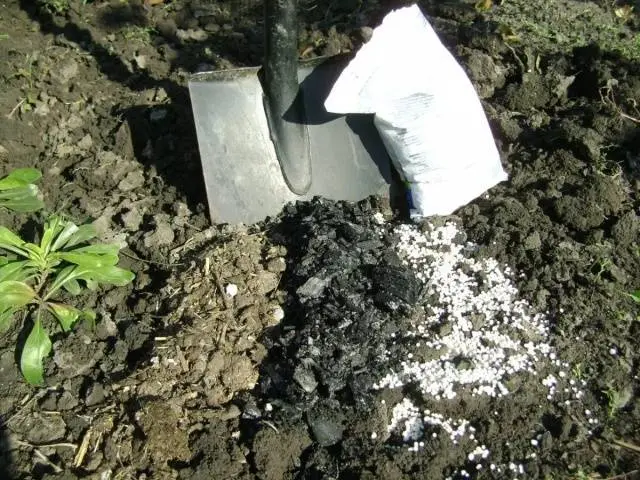
It is good if the place is on a slight hill, but a flat area is also suitable. The most important thing is that water does not accumulate in the soil near the roots of Vera, this will kill the raspberries.
The soil is preferably loose, nutritious, well permeable to air and moisture. The optimal conditions are the neutral acidity of the soil, but a slight acidification of the soil is also acceptable.
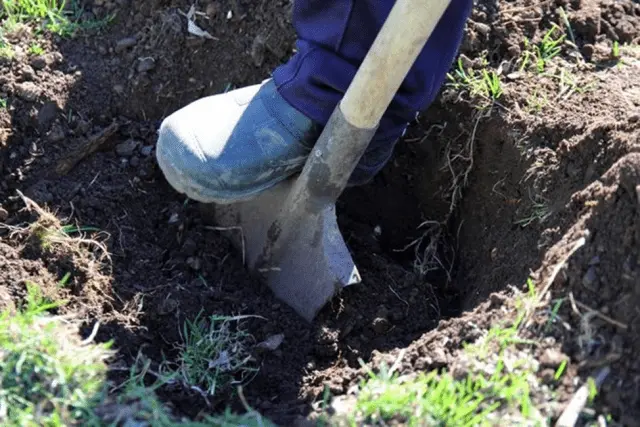
It is recommended to plant raspberries of the Vera variety in the fall – at the end of September or in the first decade of October. Pre-prepare the site for planting: dig up the ground, scatter humus, compost or rotted manure (you can use potash mineral fertilizers).
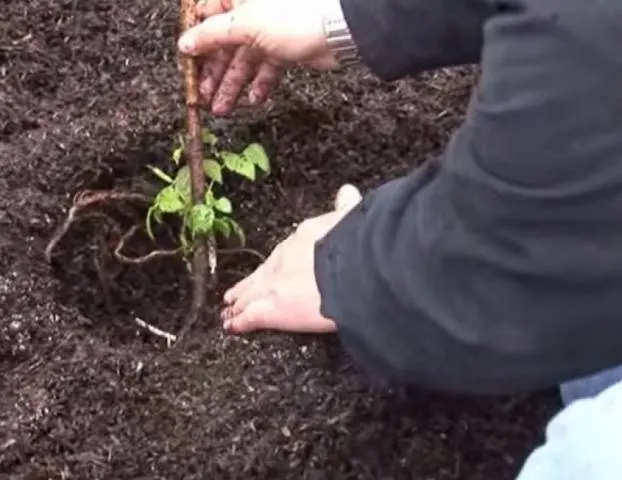
Then the holes are prepared, making them at a distance of 60-70 cm from each other. You can make trenches, then their depth should be about 30 cm, and the width should be 50-60 cm. Row spacing for Vera raspberries should be 100-120 cm.
Before planting, a good handful of wood ash is added to each hole or trench. Now the seedling is placed in the middle of the hole, its roots are carefully straightened and the raspberries are sprinkled with earth. It remains only to water the seedlings and wait until they take root.
Leaving Tactics
Careful care of the Vera variety is necessary in the post-planting period. Immediately after planting seedlings, it is recommended to do the following:
- Monitor the subsidence of the soil and fill up the ground in a timely manner, making sure that the root buds are not exposed (they should be 2-3 cm underground).

- Mulch raspberry with straw, peat or humus, protecting it from weeds, drying out of the soil.
- Before the onset of severe frosts, cover young raspberries using coniferous spruce branches, straw or sawdust.
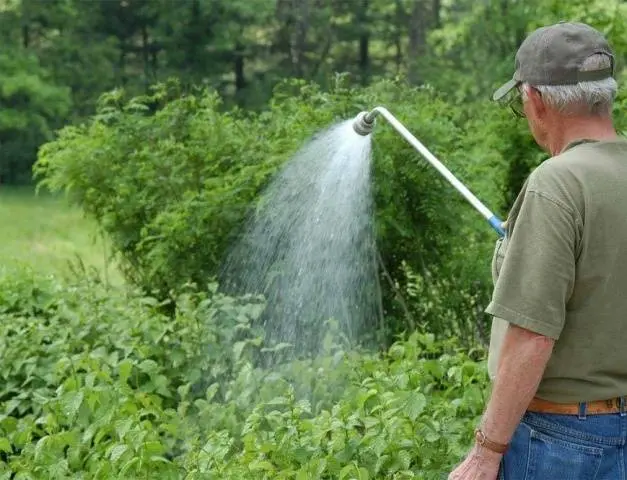
An adult raspberry tree needs minimal care at all:
- regular watering during dry periods (it is better to use drip irrigation systems);
- weeding and loosening the soil near the bushes, which can be replaced with a layer of mulch;
- preventive treatment of bushes at the initial stage of flowering (you can use Bordeaux liquid, karbofos or chemicals);
- top dressing with phosphate and potash fertilizers at least 2-3 times during the summer;
- installing supports so that the shoots are better ventilated and do not lie on the ground;
- spring and autumn pruning, involving the removal of two-year-old shoots and sanitary cleaning of the raspberries;
- shelter for the winter in regions with frosty and snowless winters.
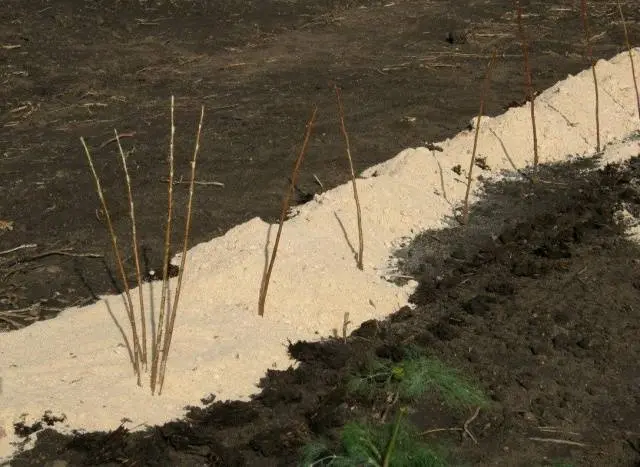
Write Your Review
Conclusion
Raspberry Vera is an old domestic variety, one of the few that has been able to maintain popularity for 30 years. It is easy to grow this raspberry, it does not require special care.
Faith’s shortcomings should be taken into account: protect it from the heat, water it, cover it for the winter and spray the bushes for preventive purposes. It cannot be said that the berries of this variety will delight with an unusual or excellent taste, this is the most common garden raspberry, from which fragrant jams and healthy compotes will turn out.










